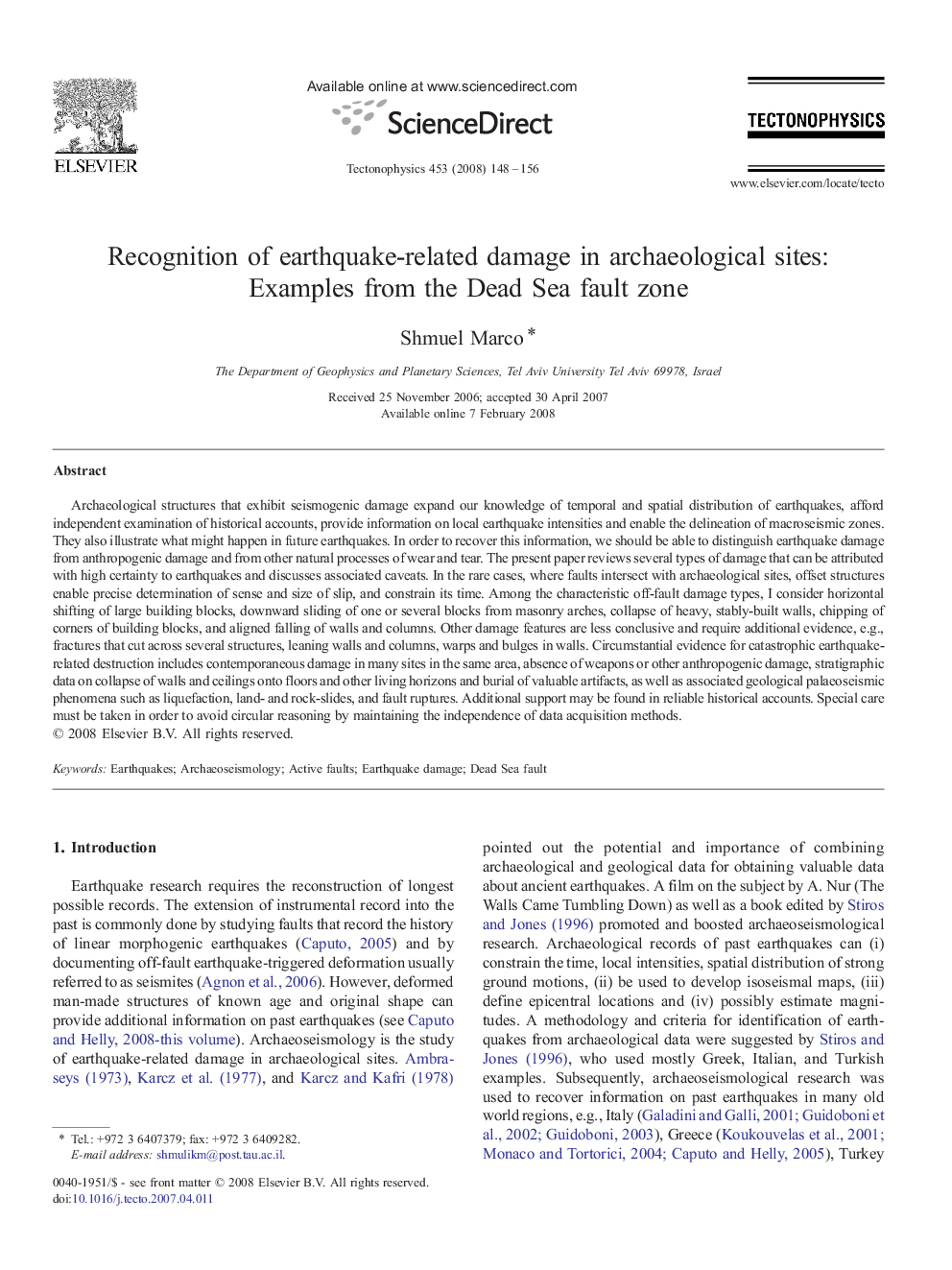| Article ID | Journal | Published Year | Pages | File Type |
|---|---|---|---|---|
| 4694536 | Tectonophysics | 2008 | 9 Pages |
Archaeological structures that exhibit seismogenic damage expand our knowledge of temporal and spatial distribution of earthquakes, afford independent examination of historical accounts, provide information on local earthquake intensities and enable the delineation of macroseismic zones. They also illustrate what might happen in future earthquakes. In order to recover this information, we should be able to distinguish earthquake damage from anthropogenic damage and from other natural processes of wear and tear. The present paper reviews several types of damage that can be attributed with high certainty to earthquakes and discusses associated caveats. In the rare cases, where faults intersect with archaeological sites, offset structures enable precise determination of sense and size of slip, and constrain its time. Among the characteristic off-fault damage types, I consider horizontal shifting of large building blocks, downward sliding of one or several blocks from masonry arches, collapse of heavy, stably-built walls, chipping of corners of building blocks, and aligned falling of walls and columns. Other damage features are less conclusive and require additional evidence, e.g., fractures that cut across several structures, leaning walls and columns, warps and bulges in walls. Circumstantial evidence for catastrophic earthquake-related destruction includes contemporaneous damage in many sites in the same area, absence of weapons or other anthropogenic damage, stratigraphic data on collapse of walls and ceilings onto floors and other living horizons and burial of valuable artifacts, as well as associated geological palaeoseismic phenomena such as liquefaction, land- and rock-slides, and fault ruptures. Additional support may be found in reliable historical accounts. Special care must be taken in order to avoid circular reasoning by maintaining the independence of data acquisition methods.
